Abstract
The biosynthetic pathway for trichothecenes in the filamentous fungus Fusarium sporotrichioides NRRL 3299 has been further characterized. Experiments using the techniques of mutational analysis and the incorporation of radiolabeled precursors indicated that leucine is a direct precursor to the isovalerate moiety present in the trichothecene, T-2 toxin. Analysis of trichothecene production in a UV-induced leucine auxotroph also revealed the existence of a branched biosynthetic pathway which results in the coproduction of T-2 toxin and the T-2 toxin analogs neosolaniol, 8-isobutyryl-neosolaniol, and 8-propionyl-neosolaniol. Leucine limitation imposed by the leucine auxotroph simultaneously led to underproduction of T-2 toxin and overproduction of these T-2 toxin analogs, which are produced in small amounts by the wild-type parent. Furthermore, it was shown that the ratio of T-2 toxin to T-2 toxin analogs produced by the leucine auxotroph can be modulated by the concentration of leucine in the medium. These results suggest that the four trichothecenes mentioned above are derived from a common intermediate and that there is competition for this intermediate among the branched pathways leading to these four cometabolites.
Full text
PDF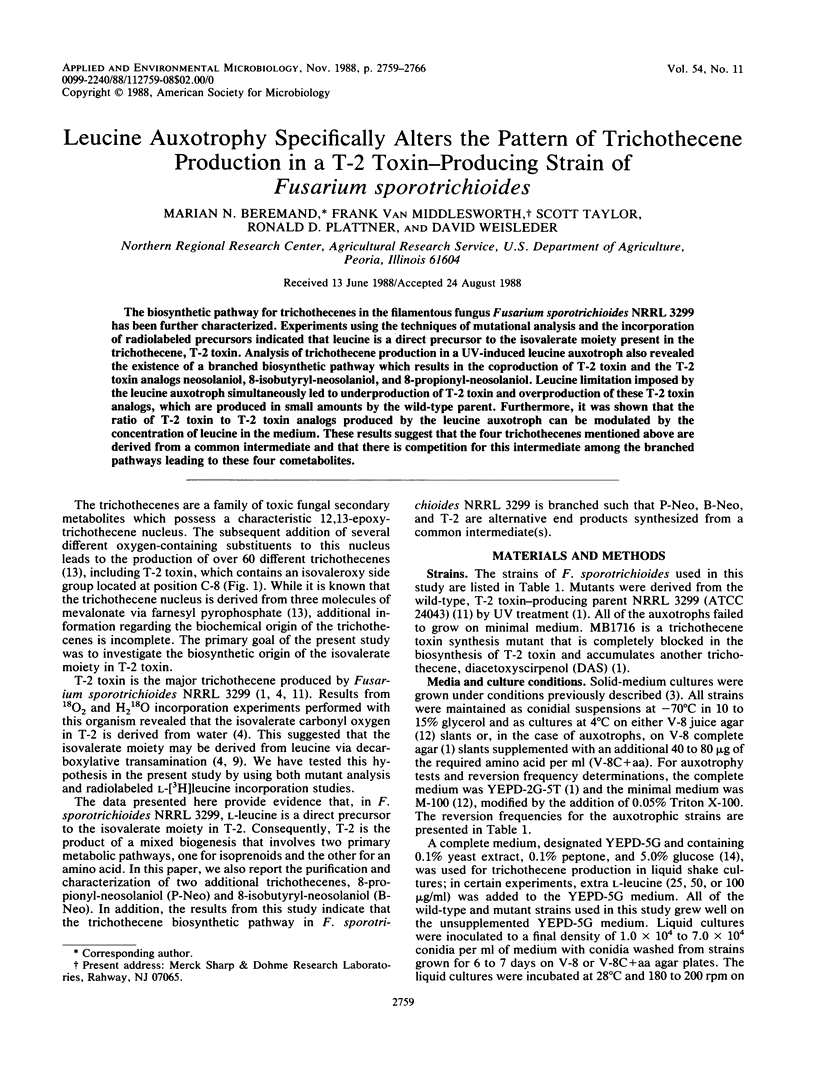
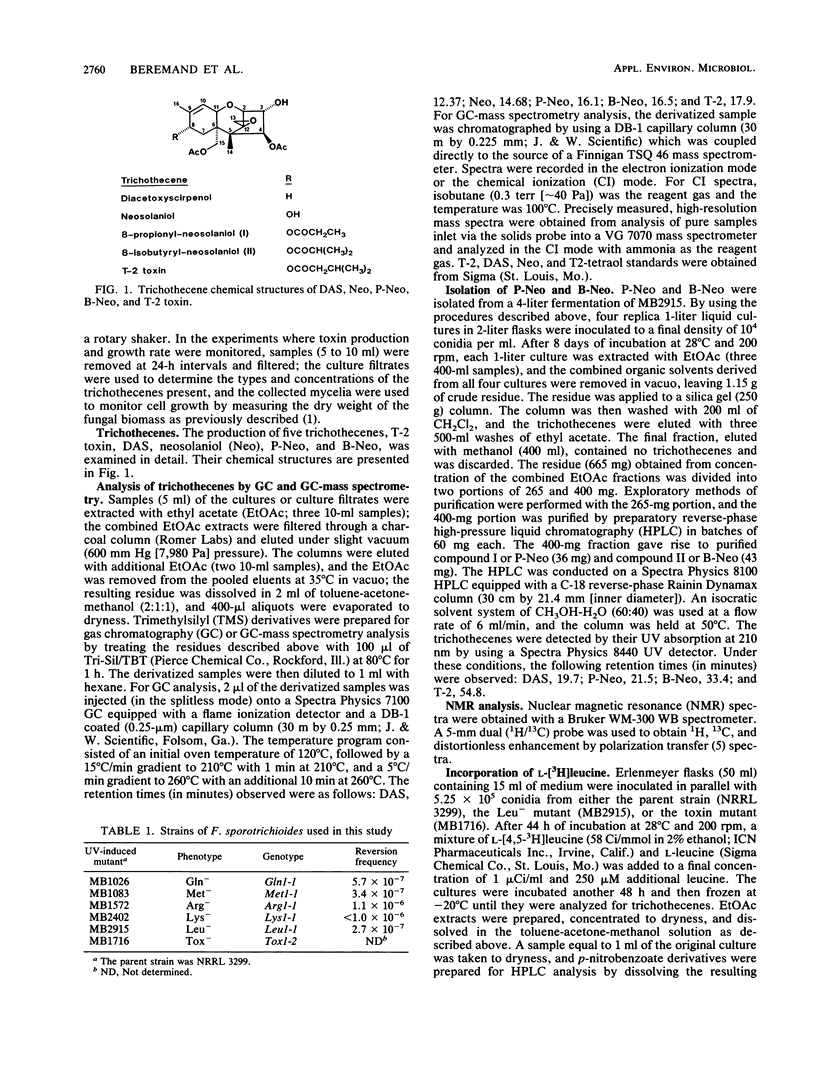
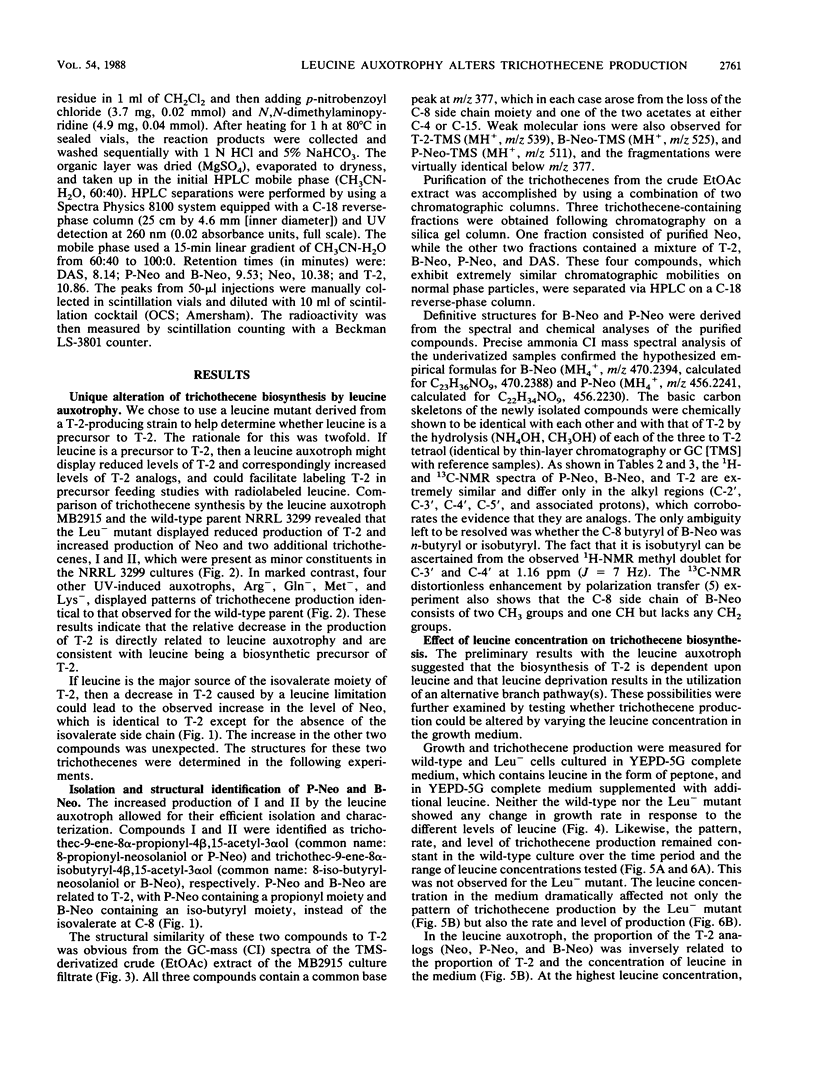
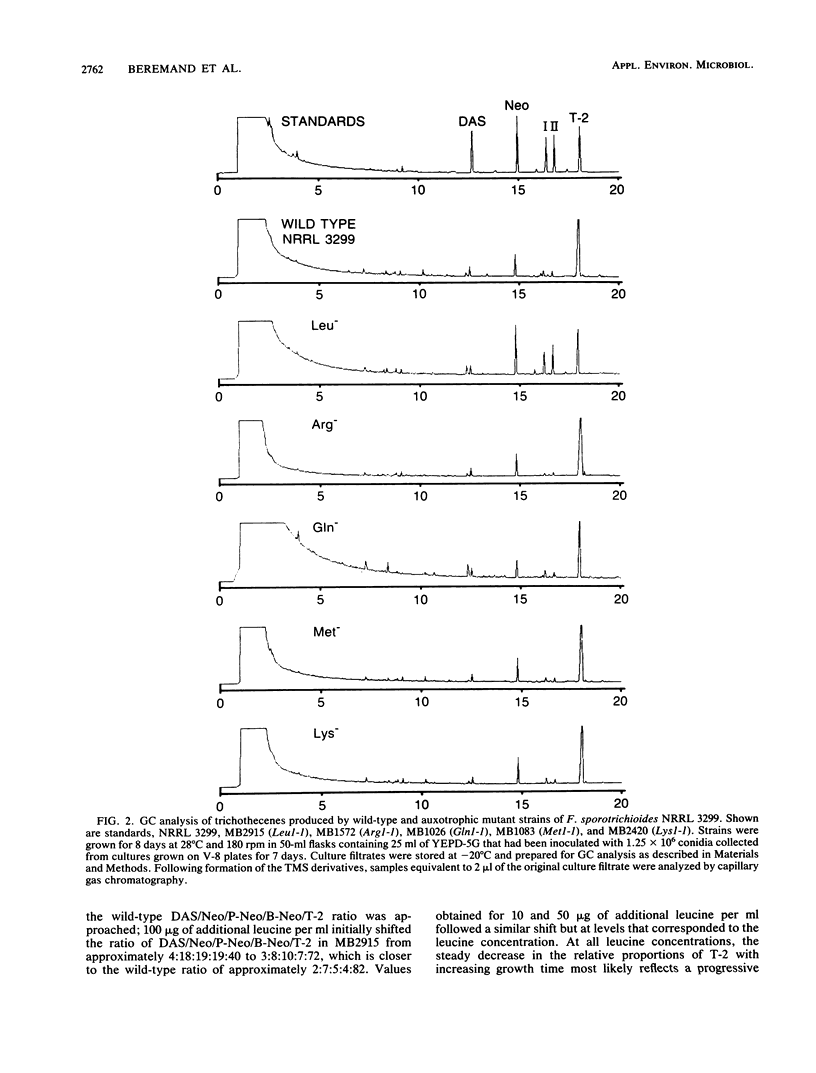

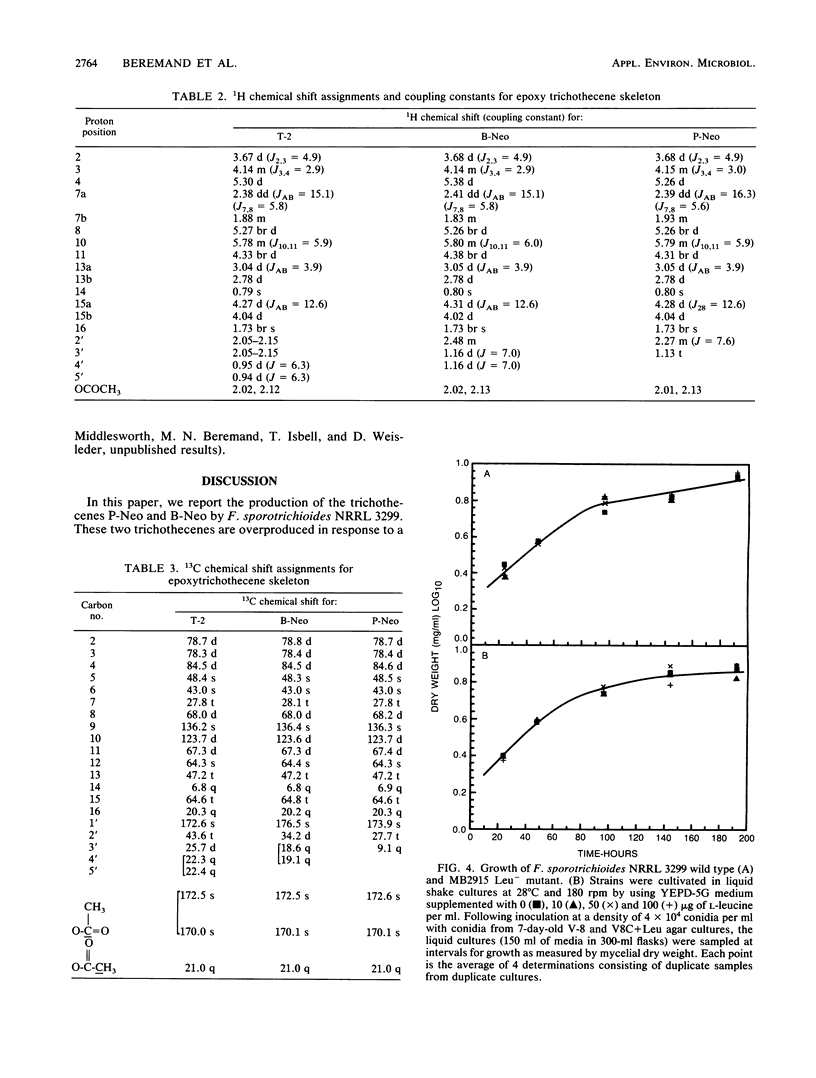
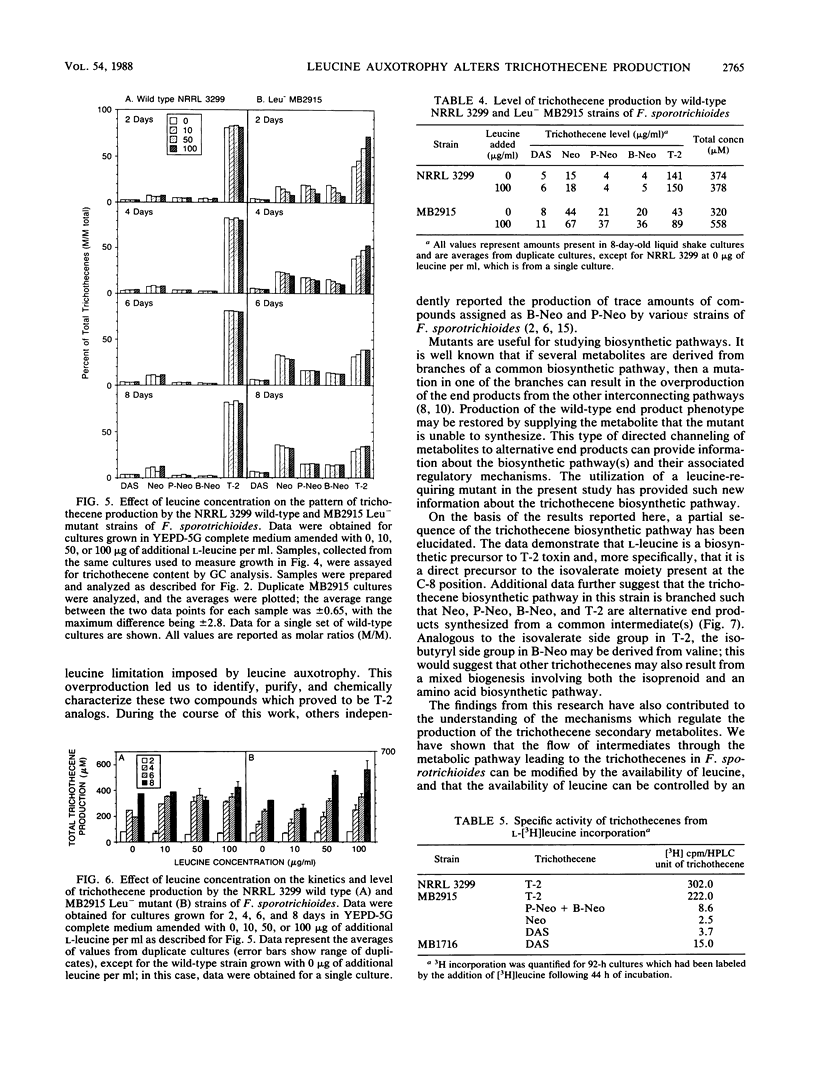
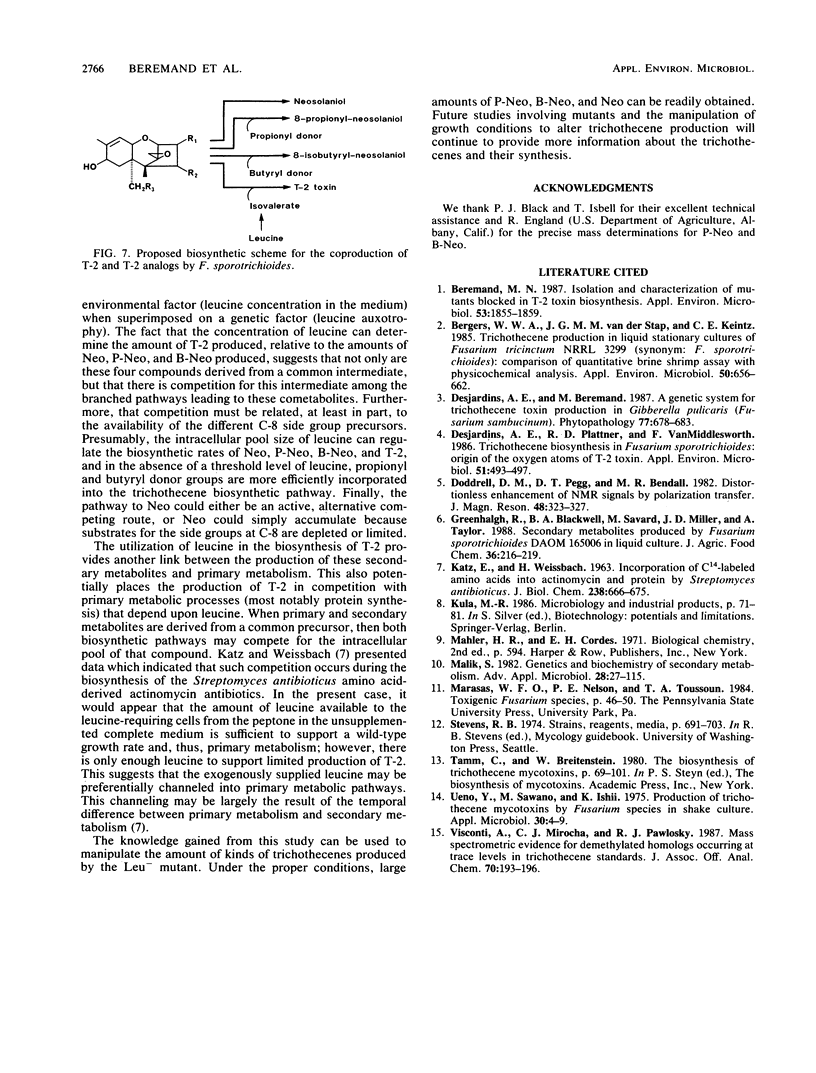
Selected References
These references are in PubMed. This may not be the complete list of references from this article.
- Beremand M. N. Isolation and characterization of mutants blocked in T-2 toxin biosynthesis. Appl Environ Microbiol. 1987 Aug;53(8):1855–1859. doi: 10.1128/aem.53.8.1855-1859.1987. [DOI] [PMC free article] [PubMed] [Google Scholar]
- Bergers W. W., van der Stap J. G., Kientz C. E. Trichothecene Production in Liquid Stationary Cultures of Fusarium tricinctum NRRL 3299 (Synonym: F. sporotrichioides): Comparison of Quantitative Brine Shrimp Assay with Physicochemical Analysis. Appl Environ Microbiol. 1985 Sep;50(3):656–662. doi: 10.1128/aem.50.3.656-662.1985. [DOI] [PMC free article] [PubMed] [Google Scholar]
- Desjardins A. E., Plattner R. D., Vanmiddlesworth F. Trichothecene Biosynthesis in Fusarium sporotrichioides: Origin of the Oxygen Atoms of T-2 Toxin. Appl Environ Microbiol. 1986 Mar;51(3):493–497. doi: 10.1128/aem.51.3.493-497.1986. [DOI] [PMC free article] [PubMed] [Google Scholar]
- KATZ E., WEISSBACH H. Incorporation of C14-labeled amino acids into actinomycin and protein by Streptomyces antibioticus. J Biol Chem. 1963 Feb;238:666–675. [PubMed] [Google Scholar]
- Ueno Y., Sawano M., Ishii K. Production of trichothecene mycotoxins by Fusarium species in shake culture. Appl Microbiol. 1975 Jul;30(1):4–9. doi: 10.1128/am.30.1.4-9.1975. [DOI] [PMC free article] [PubMed] [Google Scholar]
- Visconti A., Mirocha C. J., Pawlosky R. J. Mass spectrometric evidence for demethylated homologs occurring at trace levels in trichothecene standards. J Assoc Off Anal Chem. 1987 Mar-Apr;70(2):193–196. [PubMed] [Google Scholar]


